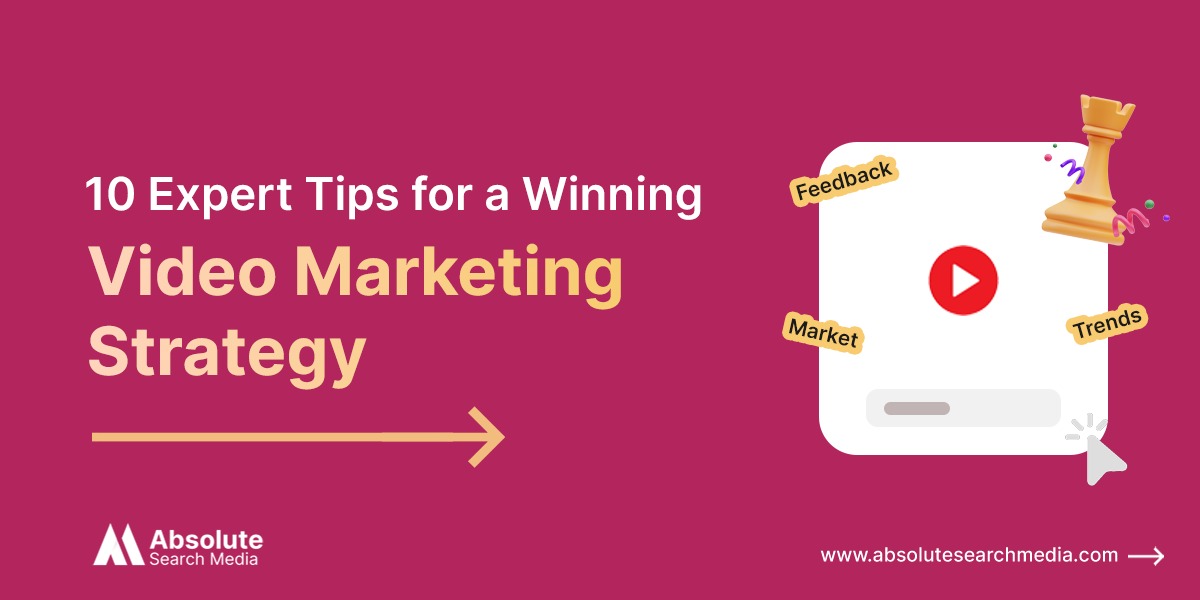With each passing day, the significance of video marketing is growing by leaps and bounds. So much so, that it is now being recognized as a key asset to uplift any business’ marketing portfolio. Companies that were focusing only on hand-written content are now adopting this imperative to dominate the digital landscape. Are you creating videos to use across multiple platforms, devices, and communication channels? If not, then you are definitely limiting your success.
However, if you are planning to make a future-ready video marketing strategy but are confused about where to begin, then you have come to the right place. This blog will give you all the needed information to become a video marketing pro. So, without any further ado, let’s get started.
The Power of Video Marketing: Why It Matters and the Stats Behind It
- Engages Audiences: Video content captures and maintains audience attention better than text or images alone. (Stats: According to Wyzowl, 86% of businesses use video as a marketing tool, and 99% of those who already do, plan to continue.)
- Boosts Conversions: Including video on landing pages can increase conversion rates by up to 80%. (Source: HubSpot)
- Enhances SEO: Websites with video content are 53 times more likely to rank on the first page of Google search results. (Source: Forrester)
- Builds Trust and Credibility: Video content humanizes brands and fosters trust, with 73% of consumers more likely to purchase after watching a branded video. (Source: HubSpot)
- Mobile Consumption: With the rise of mobile usage, video marketing is crucial, as mobile video consumption rises by 100% every year. (Source: Insivia)
- Social Media Dominance: Videos on social media generate 1200% more shares than text and image content combined. (Source: WordStream)
- Demonstrates Products: 90% of customers say video helps them make buying decisions and 64% say watching a video makes them more likely to buy. (Source: HubSpot)
- Memorable Branding: Video content leaves a lasting impression, with 80% of customers recalling a video they watched in the last month. (Source: HubSpot)
- Cost-Effective: With advancements in technology, producing high-quality videos has become more affordable, making it a cost-effective marketing tool. (Source: Animoto)
- Competitive Advantage: While 63% of businesses are already using video marketing, there is still ample opportunity for those who haven’t to gain a competitive edge. (Source: Wyzowl)
How Do I Create a Video Marketing Strategy?
Before building a video content marketing strategy, it is necessary to do research and make a proper plan. This kind of strategy helps your business thrive. It helps to identify the budget, process, production, timelines, revenue metrics, and more.
Here are some tips to create an effective video marketing strategy.
Understanding your audience and setting campaign goals: For launching a successful campaign, it is important to do thorough market research. It includes finding your target audience, understanding the content requirements they resonate with, and the platforms they use regularly. It is also important to set campaign goals. Spend time in understanding and gathering insights about consumers, which will drive you to build a good strategy.
Decide on a story to portray through video content marketing: Having to tell a story through your video can be a difficult part of building video marketing strategies. It is important to outline your framework with the necessary elements including the protagonist in the video and or identifying an untapped area/ problem, the challenges, introducing your products and services, and providing necessary solutions to solve the problem.
Creative requirements are necessary: While you craft video content marketing stories, make sure to remember the people who will review and approve the video. Having sudden changes in goals, scripting of the video, and other aspects can end the whole production, so it is important to manage the creative feedback from every team member.
Maintain the timeline and set a realistic budget: Maintaining and having a disciplined timeline for video content marketing strategy can help get the work done seamlessly without extreme changes. From ideation to creation of the video and posting them on your channels, set realistic time goals. Prepare a proper budget to extract the maximum out of your production. Plan your capital distribution structure beforehand to have the necessary resources handy.
What Kind of Video Should I Create?
Once the video content marketing strategy has been put in place, it is necessary to identify what style of video you can pitch for your brand. There are various styles and forms of video marketing and each of them can help you achieve a different goal. The types of videos you can create will completely depend on how you want to market your products and services.
Here are some types of videos you can count on:
- Commercial videos
- Social content videos
- Explainer videos
- Products and services videos
- Testimonials
What Are the Stages of Video Production?
In video production, 3 steps are involved which include:
#1 Pre-production: The pre-production stage for video marketing strategy usually covers every crevice in planning for the video. It is the first and most crucial stage in the process of production as it sets the entire video content marketing in motion. There are four major categories involved in the pre-production – Creative Brainstorming Sessions, Scripting for the videos, Storyboard for a visual representation of the script, and the Booking and preparation required to start the production.
#2 Production: Production may seem hectic but it can be organized effectively. Here, the idea and the products of a brand are hitched together. In the production stage, it is important to keep a track of the Quality of Audio/Visuals, Lighting, Styling of the entire video, and Extras that include BTS videos, quick photoshoots, etc.
#3 Post-production: The post-production stage includes the final editing and graphic creations required for the videos. Post-production is done by highly experienced editors, or companies can also align with a full-service agency. The post-production stage mainly deals with Visual effects on the video, Sound effects, Graphics, and Call to Action.
How Does Video Improve My SEO?
We have already established that video content marketing has ample benefits. One of them includes improving SEO. As a business owner, you get the privilege to push your web pages, products/ services, or any other imperatives to appear in Google searches. Your content gets easily addressed by the Google crawlers and matches the search intent of the user accordingly. Altogether, videos not only help to rank your website but also offer user satisfaction.
Here are some significant use cases to give you a better idea.
- Users easily visit your website/ mobile app by watching a video on YouTube or any other social media channel.
- Publishing video content on a VOD platform or OTT service not only earns referral traffic but also high-quality traffic that boosts your rankings dynamically.
- Shoppers are more likely to make a purchase after viewing a product video than a written piece of content.

How Do I Distribute My Video?
Distributing a brand video to the right channels can signify the success rate for your business. There are various ways to distribute your videos including paid, owned, and earned media, and it is necessary to find the correct balance between them to enhance your video marketing strategy.
Let’s understand them in detail.
Owned Video Distribution: Publishing your video content on owned media platforms is a great way to distribute your content to your audience. This media distribution includes every channel a business owns including blog posts, website and eCommerce platforms, email distribution, and organic social media channels.
Paid Video Distribution: Paid media distribution means providing money for the advertising and distribution of your video. Successful channels that provide paid distribution include search ads, paid social media content boosts, influencer outreach, sponsored content, and native advertising.
Earned Video Distribution: Categorized as a tricky modem of media distribution, earned video is leaving the content visibility up to chance. Earned distribution is originally free for implementation and can have unfavorable outcomes. There are ways to enhance earned distribution through product reviews, social media, influencer marketing strategies, and traditional PR.
How Do I Know If My Video Is Successful?
To enable the success of a video, it is critical for businesses to always have an eye for the key metrics. It helps in achieving the desired outcomes for the goals set for your videos. There are several ways to know how successful your video content marketing is.
Here’s a lowdown to a few:
#1 View Count – Identify the total number of users who have viewed your video.
#2 Engagement – The total number of comments and likes that your video has generated.
#3 Play Rate – Check how many users have actually clicked play to watch your video.
#4 Watch Time – Total amount of time for which users have watched your video including replays.
#5 Social Shares – It indicates video content sharing on social media sites or apps.
#6 Clicks and Click-through Rates – Highlights the users which are getting directed to the landing page (when running a video ad campaign with a call-to-action button).
#7 Conversions – How your video persuades viewers and converts a lead into a potential customer.
Conclusion
With each passing day, videos are taking the center stage, and implementing an effective video marketing strategy is becoming the need of the hour. As such, considering all its related factors is necessary to generate profitable outcomes in the long run. Understand how your strategy interacts with your end-user. Ensure that it caters to the requirements of all stakeholders and gives you enough room to unlock diverse business opportunities.










